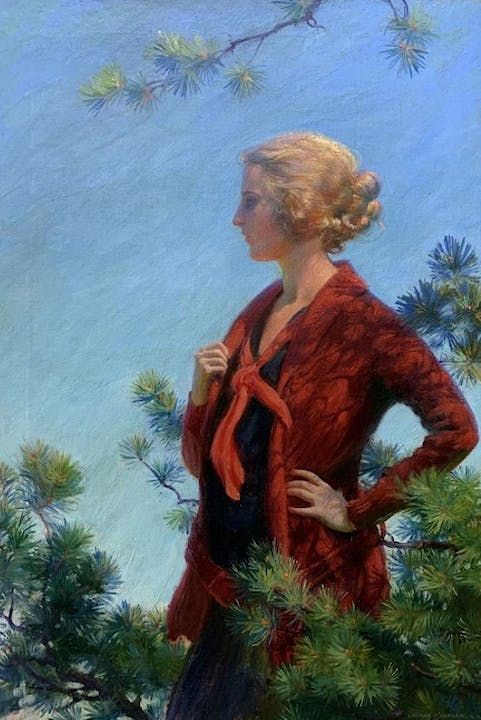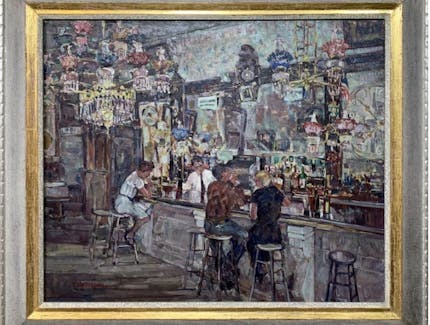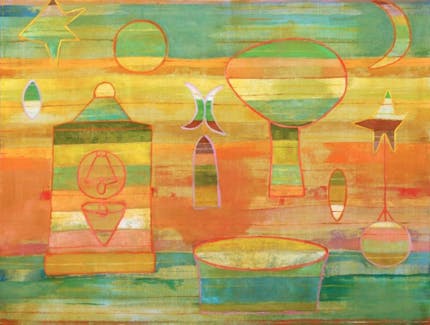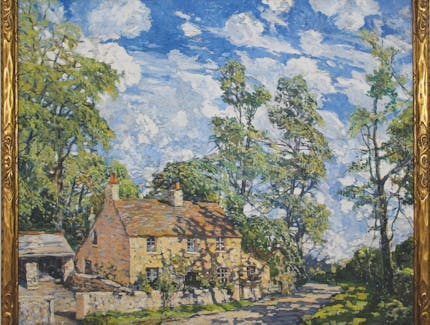Scarlett in Gold
Charles Curran
oil on canvas, 30" x 20.25"
Period Frame
Lower Right "Charles C. Curran, N. A. 1920"
Scarlett in Gold
Charles Curran
oil on canvas, 30" x 20.25"
Period Frame
Lower Right "Charles C. Curran, N. A. 1920"
An Impressionist figure, genre, and landscape painter, Charles Curran is known as a prolific artist who created light-filled paintings, often of young women. Curran was born in 1861, in Hartford, Kentucky, but in 1881 moved to Sandusky, Ohio. After studying one year at the Cincinnati School of Design, he began a distinguished career when he moved to New York City in 1882 and enrolled in the National Academy of Design. There he studied under Walter Satterlee. At age 23, he had his first public exhibition at the Academy and won numerous prizes from that time onward. Five years later he received the Academy's Third Hallgarten Prize for A Breezy Day. Following his training at the National Academy, he became a student at the Art Students' League. He then studied at the Academie Julian in Paris from 1889 to 1891. The French artist Jules Bastien-Lepage was a source of inspiration for Curran with his paintings of peasants as a common subject matter. From 1887 to 1935, he exhibited regularly at the Pennsylvania Academy. In 1903, artist Frederick Dellenbaugh invited Curran to Cragsmoor, an art center in the Hudson River Valley near Ellenville, New York. In 1910, Curran moved into a house there and established a studio. At this time, he turned to the themes and Impressionist style that would occupy most of the remaining 30 years of his life: young women in bright sunlight. His female subjects are often elegantly dressed, posed, and feminine, with uncomplicated and dreamy gazes. Curran later included flowered backgrounds in his paintings, a theme to last the remainder of his career. He occasionally painted portraits and landscapes, as well as a series of views of the Imperial Temples of Peking. Curran was a leader of the Cragsmoor Art Colony, and often taught art and painting. He was a member of the American Watercolor Society, the National Arts Club, the Salmagundi Club, and the Society of American Artists. His works can be seen in collections at the Columbus Museum of Art in Ohio, the Metropolitan Museum of Art in New York City, the National Gallery of Art in Washington, D.C., and the Toledo Museum of Art in Ohio. He died in 1942.






